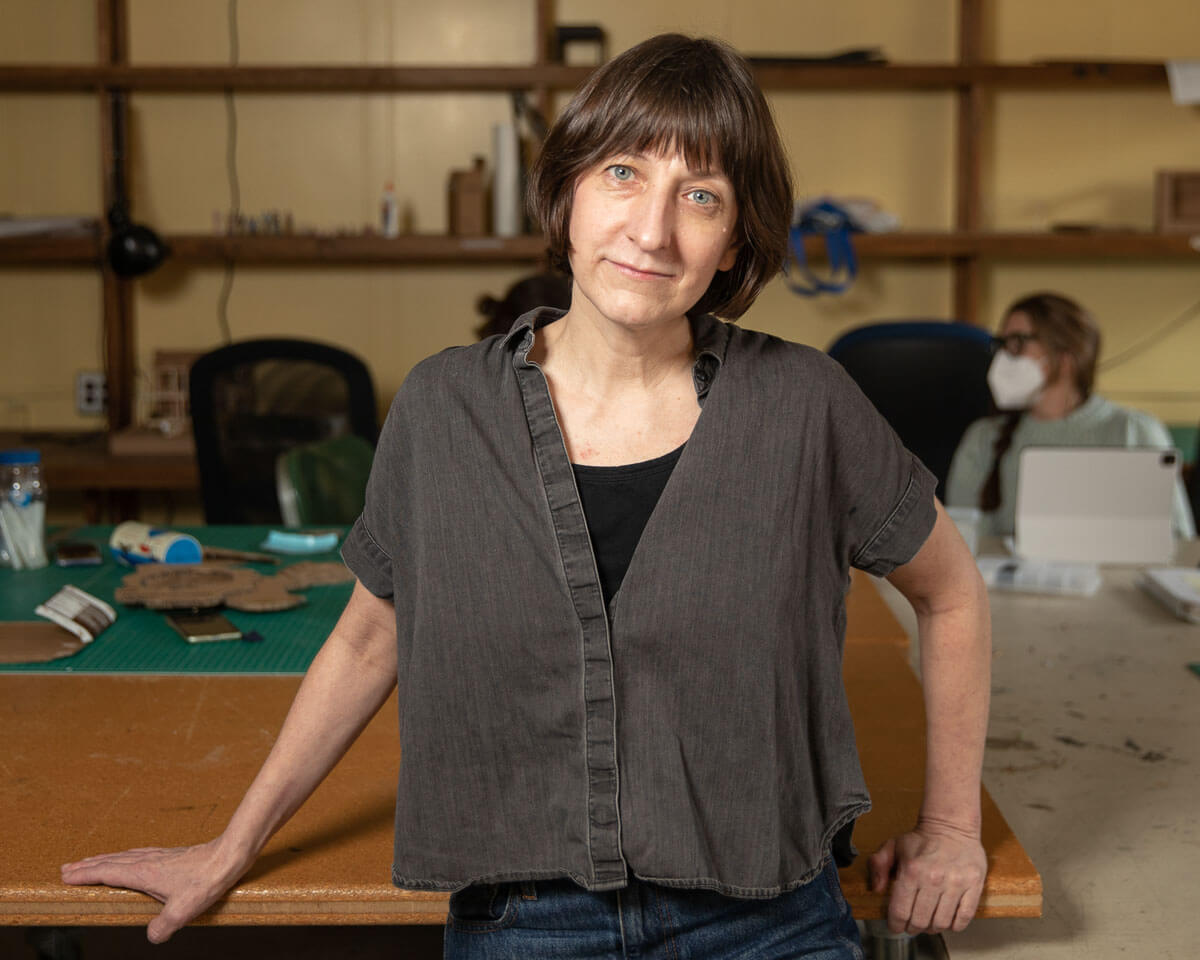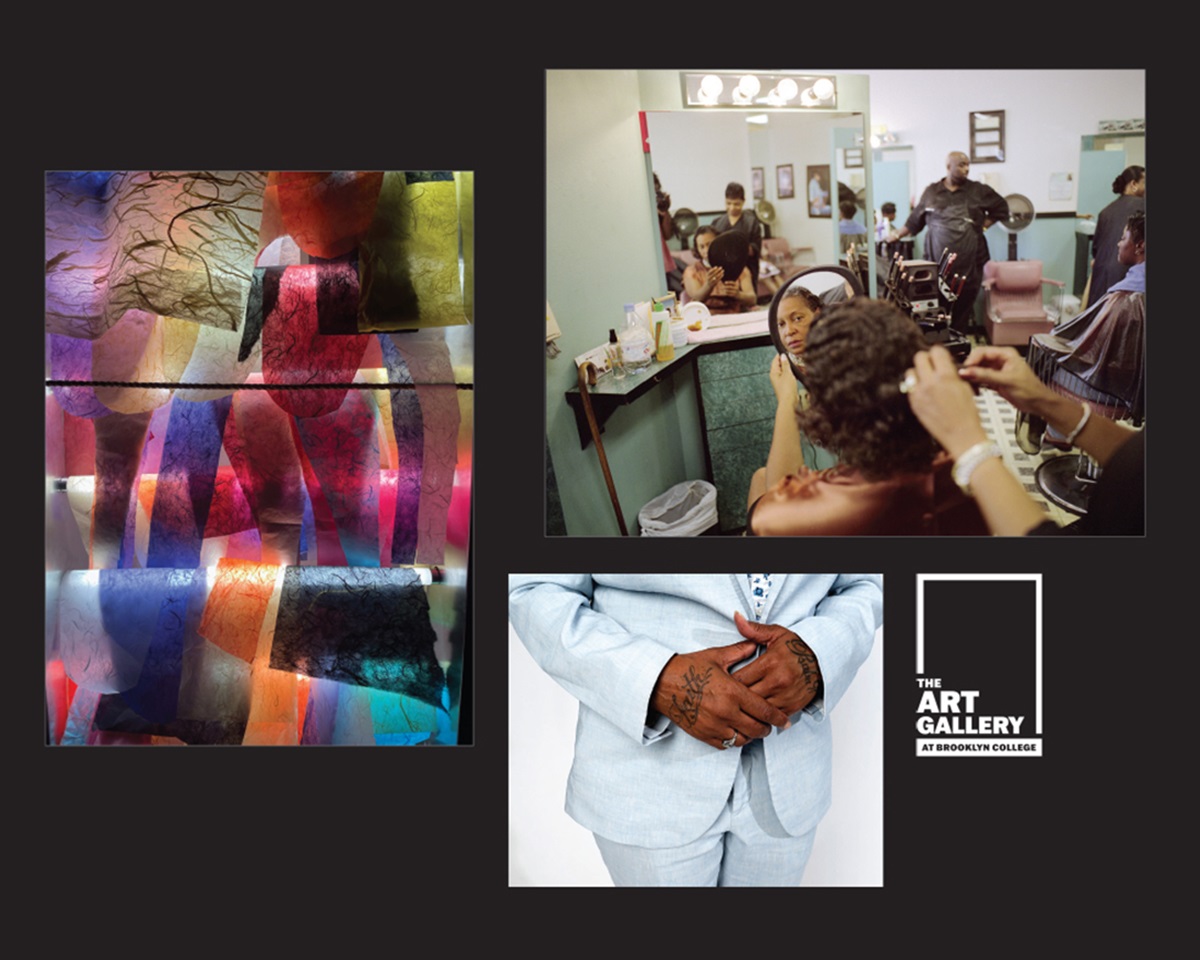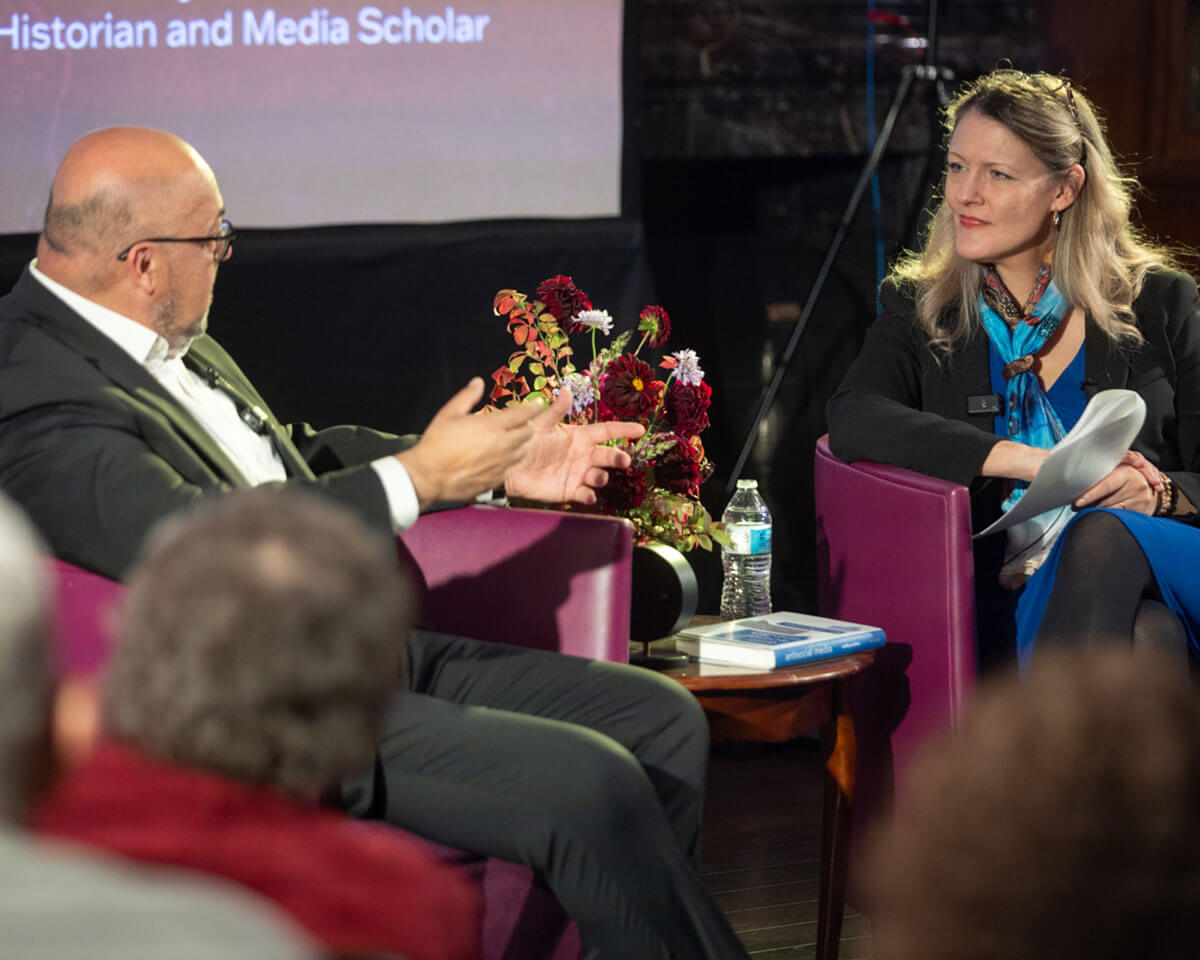About 15 years ago, Donyale (pronounced Don-yayl) Werle was working with the veteran Broadway scenic designer and art director Anna Louizos on the musical High Fidelity. It was a big-budget production that received mixed reviews and ran for only 13 days on Broadway, after which the entire set that Werle had been building for 18 months went to the dumpster.
“If a show doesn’t have commercial success, you just trash the whole thing,” says Werle, an adjunct professor in the Theater Department. “I thought: There’s gotta be a better way.”
She found one, along with her niche in the theater set design world, by focusing on sustainable design. Werle—a Tony, Obie, and Lucille Lortel Award winner—has built a career of pulling sets together using anything she can get her hands on. That has included costume fabric scraps, old projection screens she once found in a Disney warehouse, and even a door from a bodega that had a fire.
For her efforts, along with a distinguished 20-year run in the theater world (where she has also helped organize around issues of diversity and wages for workers), in March, Werle received the 2022 Distinguished Achievement Award for Scenic Design from the United States Institute for Theatre Technology.
“The USITT award is very meaningful, as I feel it best represents me as a designer, advocate, and educator,” says Werle. “It is an award given by my colleagues that acknowledges the last 20- plus years of my career. I am extremely honored to be considered for this.”
Werle, who shifted into landscape design as Broadway went dark during the pandemic, has delighted in passing the torch to her students.
“The good thing about sustainable set design is that you foster a sense of community working with artisans. You experiment, you find it together, you take chances together,” says Werle, whose list of theater credits include the renowned Bloody Bloody Andrew Jackson and Peter and the Starcatcher. “The downside is that it’s way more labor, and you’re not compensated for it. And some materials don’t last through longer runs.”
Still, Werle says that after talking about sustainability in theater circles for more than 10 years—she is the pre-production co-chair for the Broadway Green Alliance—the industry is finally starting to shift. And her students are eager to learn.
“There’s a rising group of designers who understand their place in climate change,” she says. “My students are all working with recycled materials for their sets, and they just come up with brilliant ideas. The climate crisis is their reality, so you don’t have to tell them twice. They’re more conscious than my generation of designers. I’m very excited to see where they take the industry.”
Return to the BC Magazine



